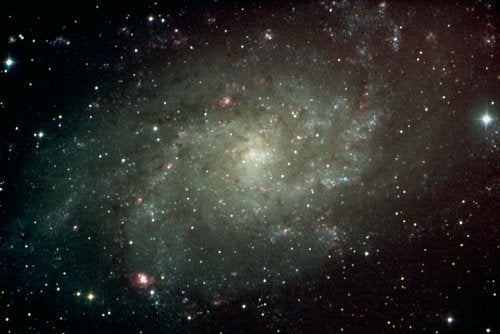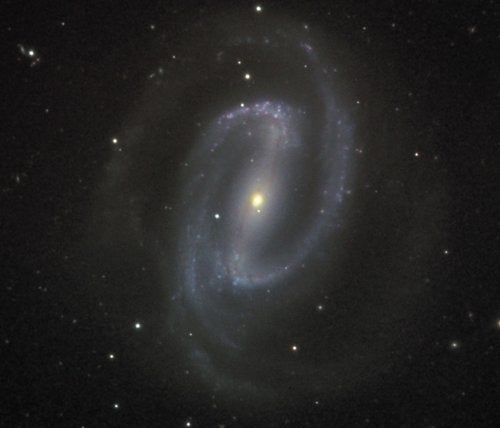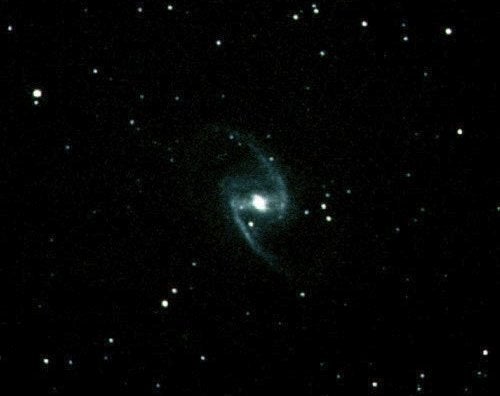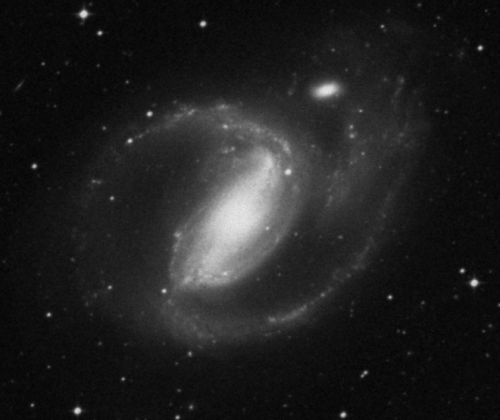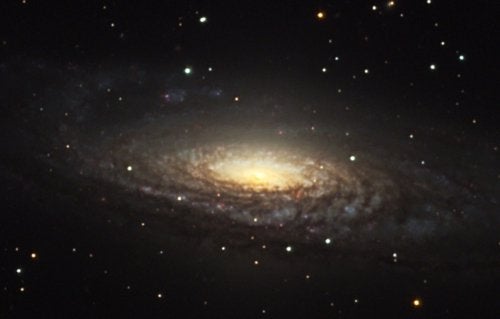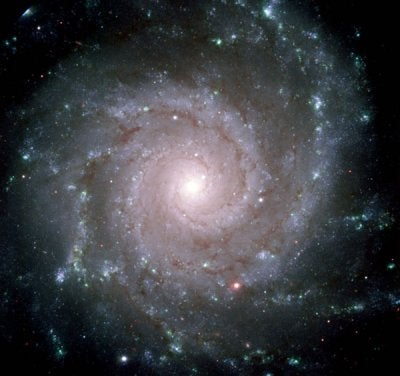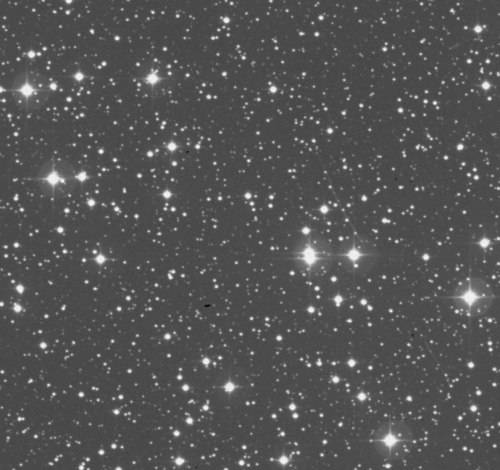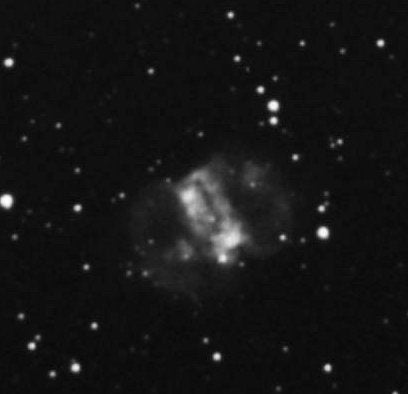M33
The Andromeda Galaxy, M31, is one of the easiest deep-sky objects for binoculars, but another nearby spiral galaxy, M33, is among the most difficult. Lying in the small constellation Triangulum, between Andromeda and Aries, M33 can be seen in dark, clear skies by eye (but not easily!). The galaxy is presented face-on to us and its pale light spreads out over an area of sky larger than the Full Moon. A large telescope will be needed to trace its spiral arms.
Barred spiral galaxies are notoriously difficult objects in which to see structure, but three of the best lie conveniently placed in the southern sky during late summer.
NGC 1300 in Eridanus is familiar from pictures in books. Moderate apertures will show the bright nucleus and the central bar, but a 12-inch (300 mm) scope probably will be needed to trace the spiral arms.
Another barred spiral galaxy, NGC 1365 in neighboring Fornax sports two massive spiral arms and lots of star formation, galaxy NGC 1365 lies about 58 million light-years away.
Another barred spiral in Fornax, NGC 1097 shines slightly brighter than NGC 1365. It is a relatively strong radio source and contains a lot of warm dust. The oval blob at upper right is a small elliptical galaxy interacting with the main galaxy.
NGC 7331 is an edge-on spiral galaxy in Pegasus that’s visible with a 4-inch telescope as an elongated smudge but is better seen with larger instruments.
M74 is a face-on spiral galaxy easy to locate near the brightest star in Pisces, Eta (&eta) Piscium. Its rounded shape can be glimpsed in small telescopes with low powers but apertures of 6 inches (150 mm) or more are needed to see any trace of spiral structure. Views of this galaxy depend strongly on sky conditions.
NGC 7243 is an open cluster in the faint northern constellation Lacerta. The cluster consists of a few dozen stars of 8th magnitude and fainter scattered over an area equivalent in size to the Full Moon.
M76 in Perseus is reputedly the faintest object in Charles Messier’s catalog. It is a planetary nebula popularly known as the Little Dumbbell and can be found with a 4-inch scope on a dark night. Each of its lobes appears as a separate object.

